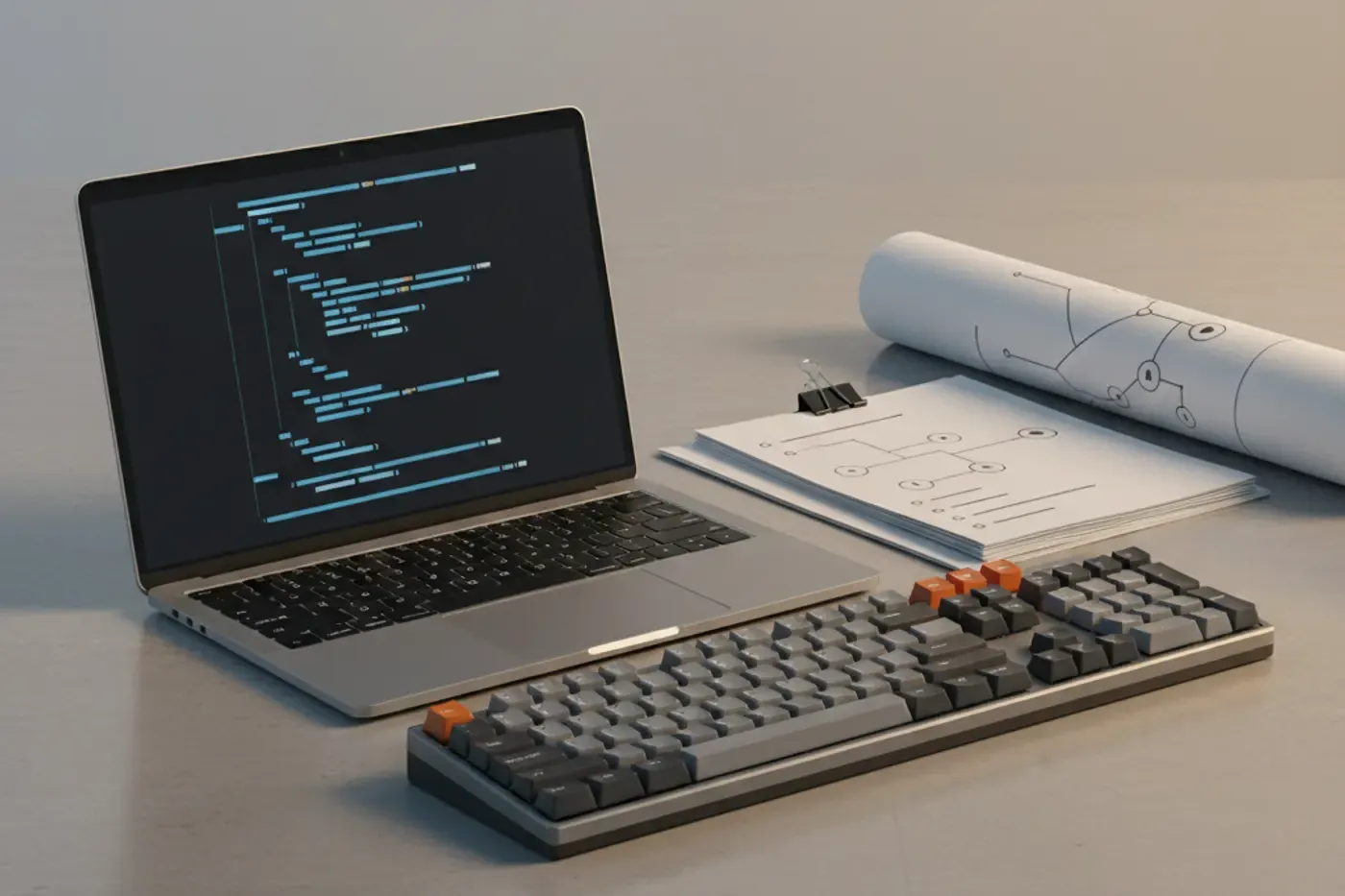Traditional technical training fails because it treats educational content like static documents instead of living software. After seven years co-founding and scaling ServiceNow’s enterprise bootcamp program—training 4,000+ engineers and generating $200M in measurable business value—I’ve learned that the most effective training platforms share one characteristic: they treat curriculum like code.
This insight led to Education as Code™, a revolutionary approach that applies software development principles to educational content. Instead of fighting clunky Learning Management Systems, engineers use Git, pull requests, and familiar workflows. Instead of stale documentation that breaks with every platform update, content stays current automatically through AI-powered suggestions tied to repository changes.
The problem with traditional training platforms
Most enterprise training suffers from the same fundamental issues. Content becomes outdated the moment it’s published because updating requires navigating complex CMS interfaces that discourage iteration. Engineers resist unfamiliar LMS tools that feel foreign compared to their daily workflows. Measuring impact remains nearly impossible without clear metrics tied to business outcomes.
At ServiceNow, we initially fell into these same traps. Our first training attempts used traditional presentation software and static documentation. Adoption crawled despite enthusiastic meeting responses because teams nodded politely then continued existing practices. Content rotted quickly as our platform evolved, creating more confusion than clarity.
What changed: treating education like software
The breakthrough came when we started treating educational content with the same rigor we applied to production code. We version-controlled curriculum in Git repositories with clear branching strategies. We established pull request workflows where senior engineers reviewed content changes just like code reviews. We implemented continuous integration that automatically tested examples and validated links.
Most importantly, we made content maintenance a shared responsibility. When platform APIs changed, the engineers making those changes also updated corresponding training materials as part of their pull requests. This eliminated the lag between platform evolution and educational content, ensuring accuracy without dedicated content teams.
The Education as Code™ methodology
Education as Code™ rests on four core principles that transform how organizations approach technical training.
Content as Code means storing all curriculum in version-controlled repositories using markdown and YAML frontmatter. This enables branching strategies for different audience levels, automated testing of code examples, and collaborative editing through familiar developer tools. Changes become traceable, reversible, and reviewable.
Developer-Native Workflows eliminate the friction of unfamiliar interfaces. Engineers create training content using the same editors, Git workflows, and CI/CD pipelines they use daily. Pull requests become the mechanism for content review and approval. Deployment pipelines automatically generate presentations and documentation from source files.
AI-Powered Currency keeps content fresh through intelligent automation. When repository changes affect APIs or workflows covered in training materials, AI agents suggest specific updates with context-aware recommendations. This transforms content maintenance from a manual burden into an automated capability.
Zero Vendor Lock-in ensures long-term sustainability through open standards. Pure markdown content works with any presentation framework. Standard Git repositories can be hosted anywhere. Web-based delivery requires no proprietary runtime or licensing fees.
Proven results at enterprise scale
Our ServiceNow implementation validated this approach across 250+ training sessions over seven years. We reduced engineering ramp time from six months to 30 days—an 85% improvement that directly impacted productivity metrics. The program trained 4,000+ engineers while generating $200M in documented business value through faster time-to-productivity and reduced support overhead.
The key insight wasn’t just the methodology but the measurement framework. We tracked meaningful productivity indicators: lead time for first meaningful contribution, review latency for new engineer pull requests, and incident rates attributable to knowledge gaps. When these metrics improved while maintaining quality standards, we knew the training investment was working.
Beyond bootcamps: a platform for any technical curriculum
Education as Code™ extends far beyond onboarding programs. API documentation becomes interactive tutorials that stay current with specification changes. Architecture decision records transform into guided learning paths for understanding system design choices. Incident post-mortems become case studies with embedded simulations for practicing debugging skills.
The platform supports multiple content types through a unified workflow. Slidev-based presentations embed live coding environments and interactive demos. Progressive web apps deliver mobile-first learning experiences with offline capability. Automated testing ensures code examples remain functional as dependencies evolve.
Implementation principles for getting started
Organizations adopting Education as Code™ should focus on three foundational elements. First, establish content-as-code practices by migrating existing training materials to Git repositories with clear contribution guidelines and review processes. Second, implement AI-powered maintenance by connecting content repositories to platform changes through automated suggestion systems. Third, measure learning outcomes through productivity metrics rather than completion rates or satisfaction scores.
The most effective implementations start small with a single, well-defined curriculum area—perhaps API onboarding or debugging workflows—then expand based on demonstrated value. Success comes from treating the educational platform itself as a product with customers, roadmaps, and measurable outcomes.
The future of technical training
Education as Code™ represents a fundamental shift from training-as-service to training-as-platform. Instead of scheduling sessions and managing attendance, organizations build learning capabilities that scale automatically with their engineering teams. Content stays current without dedicated maintenance. Knowledge transfer happens through the same collaborative processes that drive software development.
This approach honors the way engineers actually work while solving the persistent problems that make traditional training ineffective. When educational content lives alongside the systems it describes, maintained by the people who build those systems, learning becomes integrated into daily practice rather than a separate obligation.
The methodology that trained 4,000+ ServiceNow engineers is now available as a systematic platform for any organization serious about technical education. Because the best training doesn’t feel like training—it feels like building better software, together.
